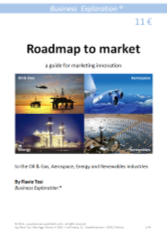

|
Many take their business decisions ignoring them, just by gut feeling.
I envy them a lot. I never understand if it is pure courage, insane madness or just a matter of faith.
What I know is that, statistically, more than nine out of ten of those guys fail miserably (and not many of the remaining can sing hurrah! as master of the markets).
They miss the point that B2B and B2C are two different kind of markets with fundamental differences:
1) B2B Client MUST buy: B2C Client needs to be motivated:
(Edison purchasing dep. West Orange, NJ~ 1920) (your personal shopper, today)
2) Buyers must solve an existing problem Consumers have no problems, just emotions 3) We need to generate a response now we need to be memorable on the long term, 4) and to help them take informed decisions and to create an image, build awareness. 5) It’s a targeted and educated audience It’s mass selling
These 5 points alone show you that targeting B2B needs specific competences and experiences that only someone with a proven track record can demonstrate.
You can read more about Marketing innovation topics in this page, or
if you want to build the foundation of your sales effectiveness on solid ground, assessing the market potential, creating a winning go-to-market strategy, reaching out key decision makers with convincing messages and efficient processes:
contact me for a initial evaluation of your requirements, free - without obligation.
|
|
www.business-exploration.com - P.I. 05998900483 - © 2012 - all rights reserved Contacts: (+39) 349 648 2225 - info@ingtosi.it - Offices: via 8 Marzo, 22 - 50051 - Castelfiorentino - ( Firenze ) - Italy “ Volemose bene, damose da fa! - JPII “ |

|
Do you know the 5 key differences between selling to a Consumer market and selling to a Business market? |


|
Index: Marketing innovation essentials: |
|
The 8 resistances - and their Tuscan translation |
|
The 8 Resistances - and their Tuscan translation
It’s the human nature. Whenever you propose something NEW, you will encounter strong Resistances. The people who will embrace your new idea in the beginning, are usually less then 2% of the population. The others will do so only when they could not do otherwise: or because in an emergency, or because their comfort zone is already in ruins. And expect that a 2% will fight the new idea with all what in its power. This is the reason why I start this section with the list of the Resistances. If You know what you will encounter, you may prepare to convince your target population faster.
1. Poor understanding of the value added: ( ma icchè me ne fo?) 2. Is not the way we do things, here: ( belle le chartine, perchè ‘un vieni a lavora’?) 3. Fearing the un-known: ( ma ‘un c’è mai stato problemi… si va proprio bene come s’è fatto finora) 4. Lack of training and reference points: (e ‘un ci s’ha il tempo per guardare queste cose ) 5. Previous failures: ( n’ho visti tanti …) 6. Not invented here: ( eh funzionerà all’ IPSTRIM, ma qui…) 7. Fearing loss of privileges: ( Thessoro… voglio il mio thessoro… ) 8. Lack of control: ( Ma tanto ‘un li guarda nessuno…) |
|
Classic Marketing - Re-loaded |
|
Service Market model - your personal market |
|
Pricing control - your hidden margin source |
|
Pricing control - your hidden margin source
You do not want that most of the profit you built with your go-to-market strategy is dispersed by a tolerant sales force, don’t you? Me neither. So I have developed a process to put in control how price is defined and declared to customers. It works for all the Companies pricing on a deal by dela basis, but also for those that has flexible catalogues.
|
|
1) Recognize pricing control is a “control” problem:
Being able to manage price offered so that a) Price is aligned with a benchmark b) Price is within tolerance
2) Control requires a managing process
A process capable to :
a) Recognize and classify the product being offered b) Compare prize offered with an acceptance criteria c) Manage deviations from an acceptance criteria d) Collect information capable to adjust the acceptance criteria
3) Acceptance criteria depend by deal value and deal frequency
a) High value : ad hoc criteria b) Normal Value: price has to be within a tolerance whose width is set with reference of the overall deals portfolio value tolerance. ( this will grant that the overall portfolio value will be kept above a minimum threshold) c) Low Value: tolerance based on statistical criteria: ( the goal is the average price on several deals , so that the alarm is not working for each failure in keeping the tolerance, and the portfolio overall value will be kept within acceptance. |

|
Back to list |
|
Back to Top |
|
Back to list |
|
Back to Top |
|
Back to list |
|
Back to Top |



